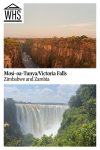Mosi-oa-Tunya/Victoria Falls
By Larch
What is Mosi-oa-Tunya a.k.a. Victoria Falls?
Victoria Falls is one of the world’s largest waterfalls, midway down the Zambezi River. The waterfall creates a natural border between Zambia and Zimbabwe. The Zambezi River is over 2 km wide (1.2 mi) as the water cascades down 108 metres (354 feet). The mist above it is visible 20 km (12 mi) away.
Disclosure: This article contains affiliate links. Making a purchase through an affiliate link will mean a small commission for this website. This will not affect your price. Privacy policy.
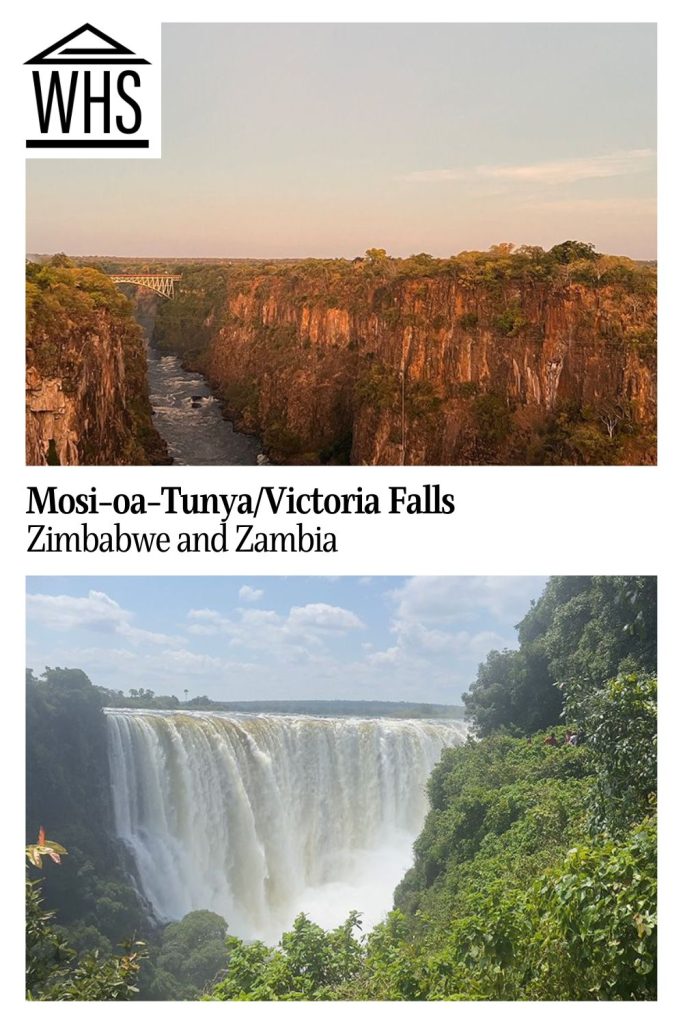
Why is Victoria Falls a UNESCO World Heritage site?
According to UNESCO, Victoria Falls (Mosi-oa-Tunya) is “among the most spectacular waterfalls in the world” with “the largest curtain of falling water in the world.” The site includes eight gorges and several small islands that are important for four species of birds that are endangered and migrate through here. The splash area of the falls makes the area around it humid, which in turn creates a “fragile ecosystem of discontinuous forest on sandy alluvium.”
The falls is also important in terms of its geology: the eight gorges “are an outstanding example of river capture and the erosive forces of the water still continue to sculpture the hard basalts.” On the site, one can see where gorges were cut by earlier waterfalls, and also the places where, in the future, waterfalls will cut.
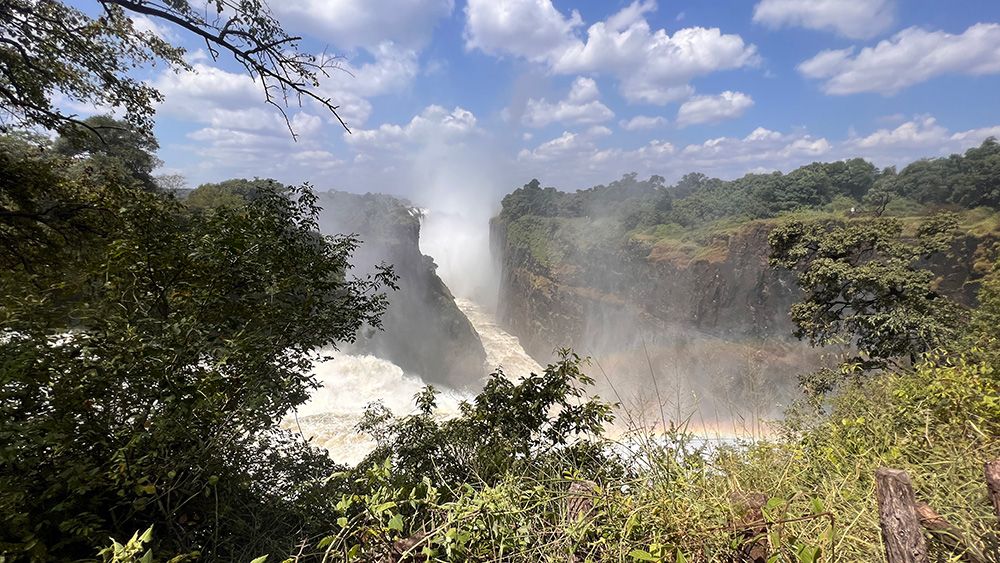
Because the waterfall is on the border between Zambia and Zimbabwe, it is a transnational UNESCO site, listed under both countries. It is Zambia’s only UNESCO site, while Zimbabwe has several more.
What can you expect on a visit to Mosi-oa-Tunya?
Unless you have actually visited this waterfall, you cannot appreciate its magnitude. The volume of water that endlessly pours over the waterfall is spectacular. Spray engulfs you, the noise is thunderous, but it is a sight that will amaze you.
Before you even get close, you hear the roar of the falls, and see the spray in the air like a halo above it. It is no wonder that the local name for the falls translates as “The Smoke that Thunders”.
When you are inside Victoria Falls National Park on the Zimbabwe side, you can follow the stone paths which take you to the various viewpoints of the falls.
Particular viewpoints to look out for are the Devil’s Cataract at viewpoints 3 and 4. This is where you can get a view into the deep pool which has been carved out by the continuous pouring of the water. Look out for rainbows, including stunning double rainbows.
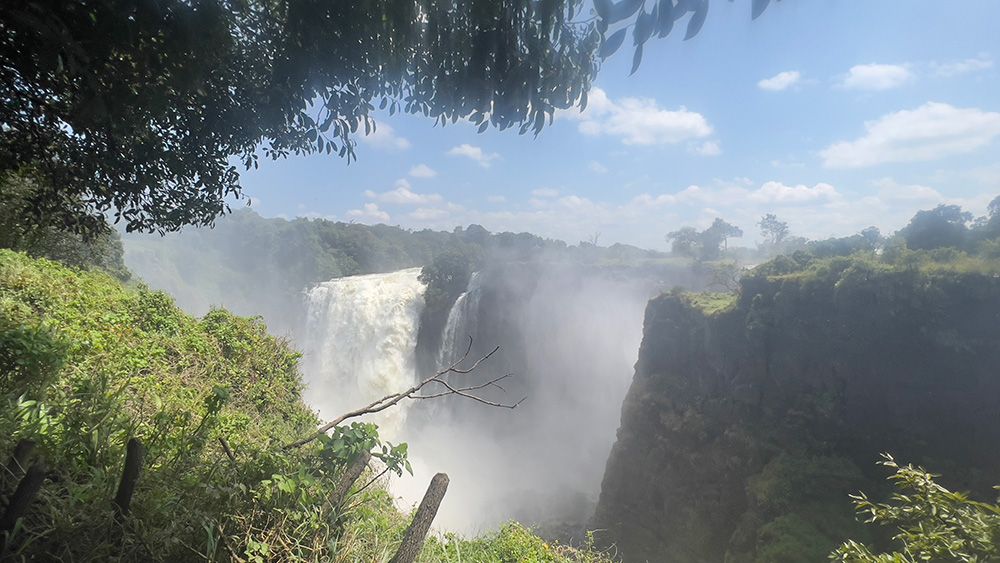
On the far left side of the Falls is a statue to David Livingstone, the Scottish explorer who gave the falls its name in 1855 in honour of Queen Victoria.
You can also visit the waterfall from the Zambia side, where the park’s name is Mosi-oa-Tunya National Park.
Is Victoria Falls worth visiting?
Seeing the falls is an amazing experience for everyone. It is hard to describe how breathtaking the falls are. You feel in awe of the power of nature. For a different perspective, it is worth crossing to the middle of the Victoria Falls Bridge too, or crossing into Zambia.
You will need a good couple of hours to explore the whole of Victoria Falls.
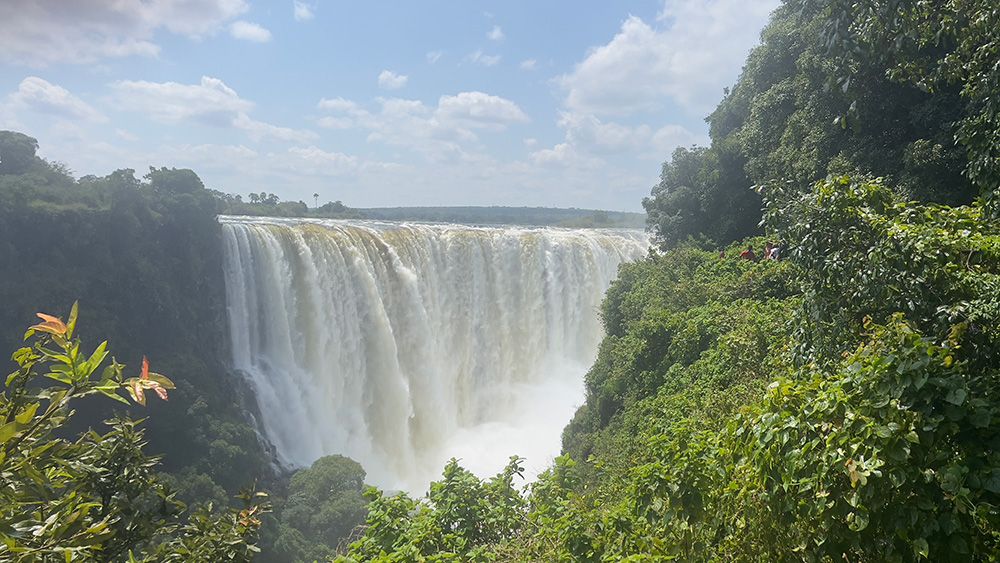
Tips for visiting Mosi-oa-Tunya
Expect to get wet. It doesn’t matter how covered up you think you are; the water will get in your clothes, shoes or hair. Embrace it, it is part of the experience. You can buy or hire waterproof coverups from local vendors, but everyone I saw was still wet. Take a spare set of clothes in a waterproof dry bag.
Wear non-slip shoes if you have them. Some of the paths can be slippery as they are constantly wet.
Protect your valuables, particularly cameras. It is tempting to take a camera, but you risk water getting in it and ruining it.
The map below is centered on Victoria Falls Bridge. Zoom out to see accommodations options on both sides of the border:
Take cash to pay. Sometimes the card machine is not working.
If you walk to the falls from the centre of town on the Zimbabwe side, take care, as sometimes wild buffalo or even elephants are in the area. Remember these are wild animals and can be unpredictable.
You can walk the 1.8 km (1 mi) between the two border crossings over the Victoria Falls Bridge, where the views are wonderful. Before you walk between countries, though, make sure to check the visa rules. Depending on your passport, you might need to pay for a new visa when entering or re-entering a country.
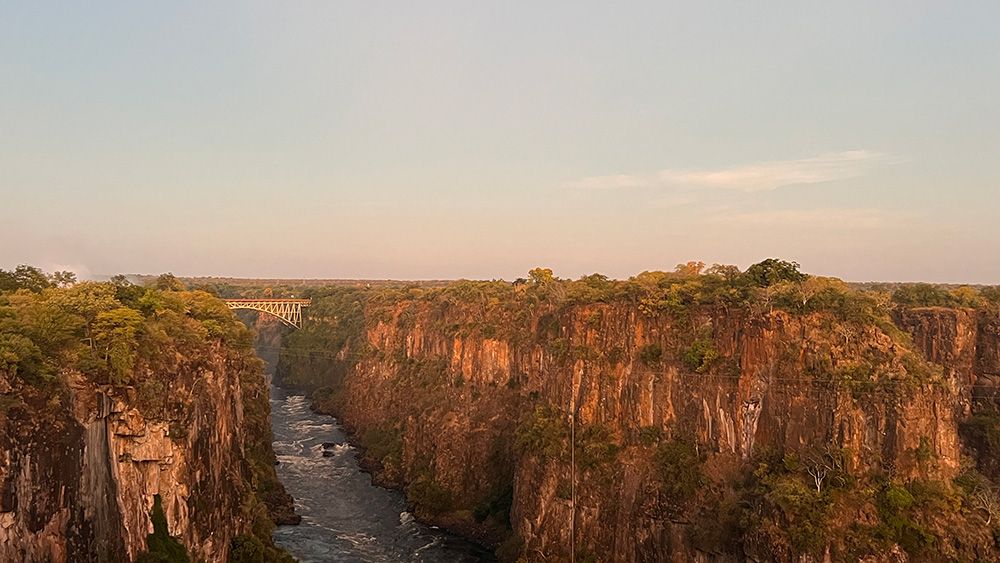
You can also see the falls by boat – a placid cruise or an exciting whitewater rafting trip – or by air – helicopter or zipline! And there are plenty of ground tours that combine viewing the falls with other sights in the area. Click on the banner below to see all the options:
If you want to choose just one side, choose the Zimbabwe side. It has more paths and viewpoints than the Zambia side.
Where is Victoria Falls?
Victoria Falls is in the far south of Zambia, about 500 km (311 mi) southwest of Lusaka. It is in the northwestern tip of Zimbabwe, about 435 km (270 mi) from the city of Bulawayo. The nearest airport is Victoria Falls airport in Zimbabwe, which is served by domestic and regional carriers.
In Zimbabwe, Victoria Falls is about a 3-minute drive from the centre of the town of Victoria Falls. Most hotels in town arrange transport for you or you can take a taxi. The same goes in Zambia, except that it is further from hotels in the town of Livingstone: about a 20-minute drive.
The other option for getting to the Falls is by walking, if you’re on the Zimbabwe side. It’s about a 30-40-minute walk from the centre of town. For more information about Victoria Falls, its opening hours and admission fees, see its official website.
Have you been to Victoria Falls? If so, do you have any additional information or advice about this UNESCO World Heritage site? Please add your comments below!

